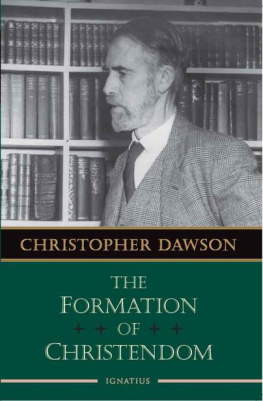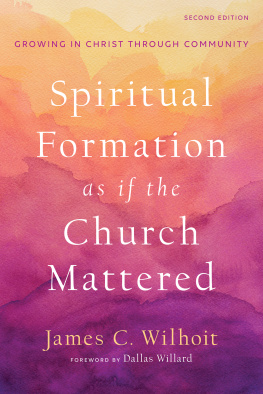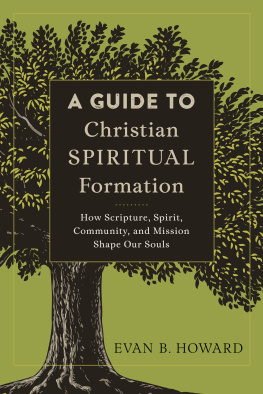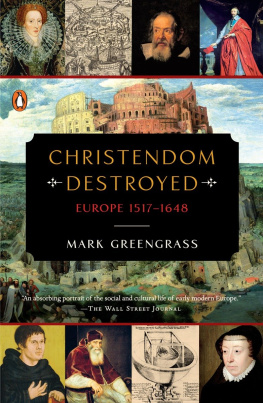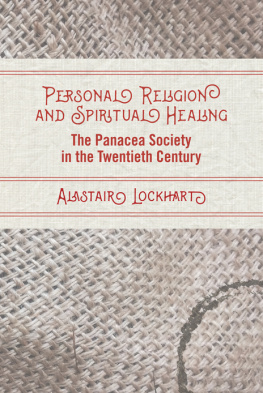THE FORMATION OF CHRISTENDOM
The Formation of
CHRISTENDOM
CHRISTOPHER DAWSON
IGNATIUS PRESS SAN FRANCISCO
Originally published by Sheed & Ward, New York, 1965
First English edition published by
Sedgwick and Jackson, Ltd, London, 1971
Julian Philip Scott 2008
Literary Executor of the Estate of Christopher Dawson
Reprinted by permission of Mr. Julian Philip Scott
All rights reserved
Cover photograph:
Christopher Dawson, Oxford, ca. 1952
Courtesy of the Department of Special Collections,
University of St. Thomas, St. Paul, Minn.
Cover design by Roxanne Mei Lum
Reprinted in 2008 by Ignatius Press, San Francisco
ISBN 978-1-58617-239-8
Library of Congress Control Number 2007941453
Printed in the United States of America
ORIGINAL PUBLISHERS NOTE
The material in this book has been somewhat expanded from the Harvard lectures. In the lectures themselves, Mr. Dawson sometimes used a few paragraphs from earlier books. This accounts for a few passages which the reader may feel that he has met before.
NOTE ON THE IGNATIUS PRESS EDITION
Some minor changes to spelling and punctuation have been made to the text.
CONTENTS
Introductory
Beginnings of Christian Culture
Formation of Medieval Christendom:
Its Rise and Decline
AUTHORS NOTE
As the first occupant of the Charles Chauncey Stillman Chair of Roman Catholic Studies at Harvard, from 1958 to 1962, I chose as my theme Christendom. The lectures fell naturally into three groupsThe Formation of Christendom, The Dividing of Christendom, The Return to Christian Unity.
The second group, covering the period from the Reformation to the French Revolution, were published in 1965 in the book The Dividing of Christendom . The present book contains all the lectures of the first group, dealing with the formation of Christendom, from its origins in the Judeo-Christian tradition through the rise and the decline of the medieval unity.
PART ONE
Introductory
I
INTRODUCTION TO THIS STUDY
T HIS Chair is a very recent foundation and hitherto the study of Roman Catholicism has not had any place in the curriculum of the Harvard Divinity School. It is easy to understand the historical reasons for this. Harvard College was one of the original institutions of this Commonwealth, and so from its foundation down to the Revolution it was essentially a Protestant institution, closely bound up with the established Church of Massachusetts and with the tradition of Puritan and Calvinist theology.
When the Divinity School was founded early in the nineteenth century, it reflected the religious changes that had passed over New England since the Revolution and found their intellectual expression in the Unitarian movement, which had its origin and center here at Boston at the end of the eighteenth century. This was essentially a liberal movement which sought to widen and liberalize theological studies, but of course its liberalism did not extend as far as Catholicism. It is true that William Ellery Channing, who was perhaps the leading influence on the Divinity School in its early days, was an advocate of Catholicity, but his conception of Catholic Christianity (to use his own expression) was further from historical Catholicism than even the Calvinist orthodoxy against which he reacted.
In the course of the nineteenth century the bond between the Divinity School and the Unitarian Church was gradually relaxed until in President Eliots day it became a purely non-sectarian school for the historical and scientific study of religion. Thus there was no longer any reason to exclude the study of that form of Christianity which occupies the foremost place in space, time and membership. At that time, however, such a development was inconceivable. If you read President Eliots address on the Religion of the Fathers, which he delivered in 1909 to the Summer School of Theology here, you will see that he had very little interest in Christianity as an historical reality, or in theological study, but looked rather to the identification of religion and culture by an increasing ethical concern with social progress and public health, so that the doctor and the sanitary inspector would take the place of the priest or the bishop as the bearers and representatives of a new order.
I am far from wishing to depreciate the importance of the cultural issueit is just the subject I am most concerned with. But I am sure that this is not the right approach. If it were so, the Divinity School ought to close and we should all betake ourselves to the School of Medicine or the School of Public Health.
Theology must be mistress in its own house. For it is an autonomous field of study which cannot be reduced to a department of social ethics, any more than the Church itself can be reduced to a philanthropic association. Since Eliots day there has been a widespread recognition of this and a genuine movement of return towards theology and a new understanding of the meaning of the Church. This movement is common to Protestants and Catholics, and it is no doubt largely responsible for the development of the Ecumenical Movement and the growing interest in the problem of Christian reunion: a movement and an interest which are destined to become still greater in the years ahead. It is impossible to go very far with these questions without some study of Catholicism. For the existence of the Catholic Church is one of the great objective realities of history. It is impossible to write the history of Christianity without it, and it is equally impossible to understand the history of our own civilization, since Catholicism has been one of the greatest culture-forming forces in history and has left its mark on many of the characteristic institutions of Western civilization.
This cultural predominance is due above all to the fact that it was the Catholic Church that was responsible for the conversion of Northern Europe to Christianity and that it was from the Church that the Northern peoples received the elements of the new civilization which they continued to develop during the following centuries under Catholic influence. But on the other hand, it must be recognized that during the last four hundred years, ever since the Reformation, it has become increasingly difficult to realize the religious values of this common cultural inheritance. The fact that Catholicism was so deeply involved in the history and culture of the European past became a source of antagonism rather than unity, since the Protestants, and especially the Calvinists and the Puritans in England and America, had come to look on the whole Christian past for a thousand years as a dark age of religious superstition and idolatry, of a cultural barbarism out of which the reformed Churches were emerging.
Thus there arose a strong cultural antagonism as well as a religious opposition between the two halves of divided Christendom. More and more, religious differences became merged with political and national divisions, so that Catholics and Protestants no longer spoke the same language or belonged to the same social world. This tendency for religious and cultural divisions to become fused with one another was no new phenomenon in Christian history. The great schisms of the ancient Church tended again and again to follow the lines of race, language and nationality. The schism, for example, between Catholicism and Monophysitism was part of a general rift between East and West, between the Roman Byzantine Empire and its Syrian and Egyptian subjects. So too the schism between the Catholic West and the Orthodox East in the Middle Ages was the outcome of a growing cultural and social alienation between the subjects of the Byzantine Empire and the new peoples of the West.
Next page
